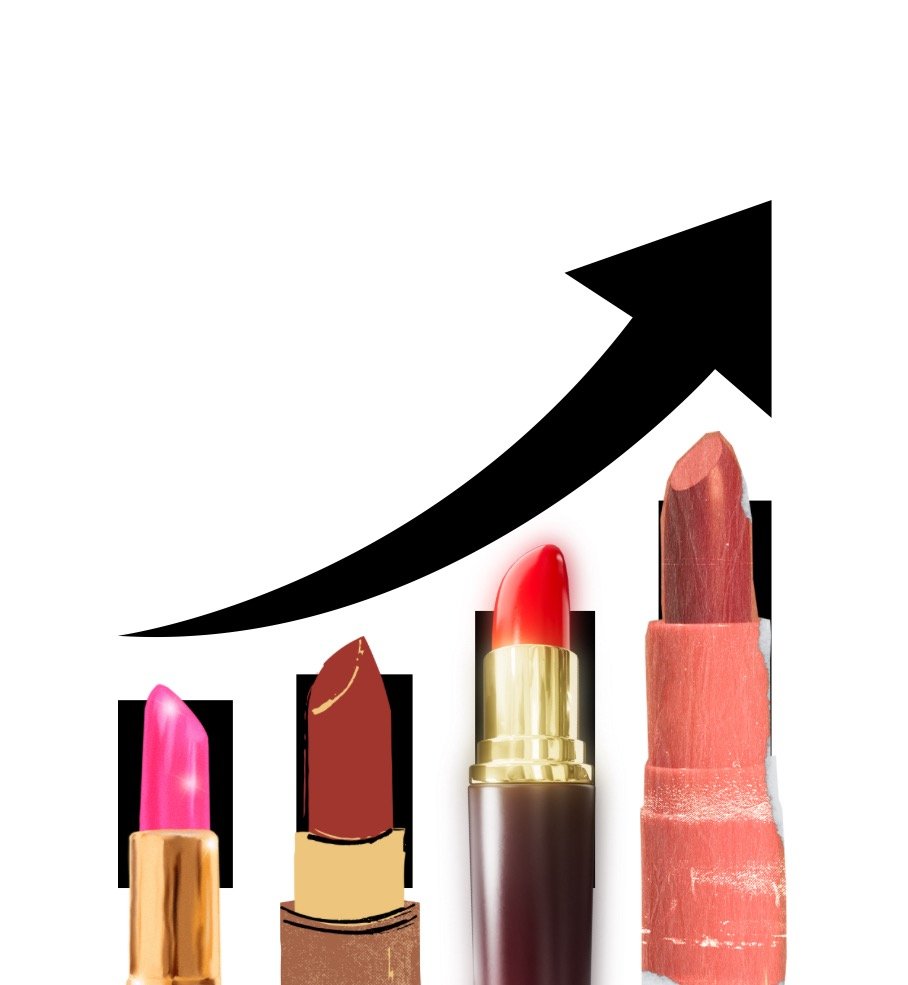Little Luxuries: How Cosmetic Sales and the Economy Are Connected
Can we use cosmetic products to predict our economic situation? Surprisingly, the answer is yes! Economists have been using the term “lipstick index” since the early 2000s to categorize the connection between cosmetic sales and times of economic insecurity. The phrase comes from a 2001 Wall Street Journal interview with Leonard Lauder, heir and then chairman of Estee Lauder — a leading conglomerate in the cosmetics industry. Lauder was the first to note the correlation between the sales uptick in cosmetics during the 2001 financial crisis. Examples of the lipstick index go as far back as the Great Depression and a similar pattern showed up during the 2008 recession. However, with the rise in popularity of designer cosmetics, one cannot help but wonder if history is going to repeat itself.
Professors Sarah Hill and Christopher Rodenheffer solidified the legitimacy of the lipstick index during their academic inquiry into the psychology of the subject at Texas Christian University. In their study, “Boosting Beauty in an Economic Decline: Mating, Spending, and the Lipstick Effect,” Hill and Rodenheffer expand the definition of the lipstick index to include other cosmetics and beauty products such as nail polish, perfumes, skincare, haircare, or any product that enhances someone's natural features. They found that in times of economic instability, the demand for designer cosmetics increased while the demand for drugstore products plateaued or decreased. This shift was not exclusive to one economic class. Cosmetics sales boomed regardless of people’s economic echelon. This placed the lipstick index in a unique position as a psychological indicator of market instability.
In a form sent out to Upper learning (UL) students, it was found that students have spent over $7000 on luxury cosmetics within the past year. The most popular items being the Laneige Lip Sleeping Mask, Dior Lip Oil, Benetint Liquid Lip Blush/Cheek Tint, and Too Faced Better than Sex mascara. The general cosmetics theme of Galloway tends to skew toward a subtle, healthy look. Things like flushed cheeks, dewy skin, glossy lips, and long lashes are staples in Galloway students’ daily makeup. Although the retro fashion revival is in full swing, the makeup of decades past is primarily left behind, with the occasional exceptions of cult classic lippies like Clinique’s black honey and Revlon’s rum raisin. While our parents had Lancome’s juicy tubes, we have Dior lip oils, so what does this shift in popular cosmetics tell us about the economics of the future?
Only 41.2% out of roughly half of Galloway UL students have purchased or been gifted luxury cosmetics within the past year. The general population’s gloomy perspective on the economic situation might be unwarranted. The statistics pulled from UL students, combined with the patterns of the lipstick index, show a plausible upcoming upward trend for the economy. Additionally, the stocks of Estee Lauder have been decreasing in value for the past couple of months. As one of the biggest cosmetics conglomerates in the world, Estee Lauder should be gaining stock if the entire market was moving into a decline. With the dependable readings from the lipstick index, we should shift towards an optimistic outlook for the 2024 economic forecast as we look to the future.
By Leah Mederios

